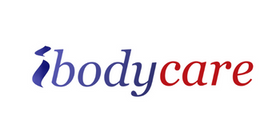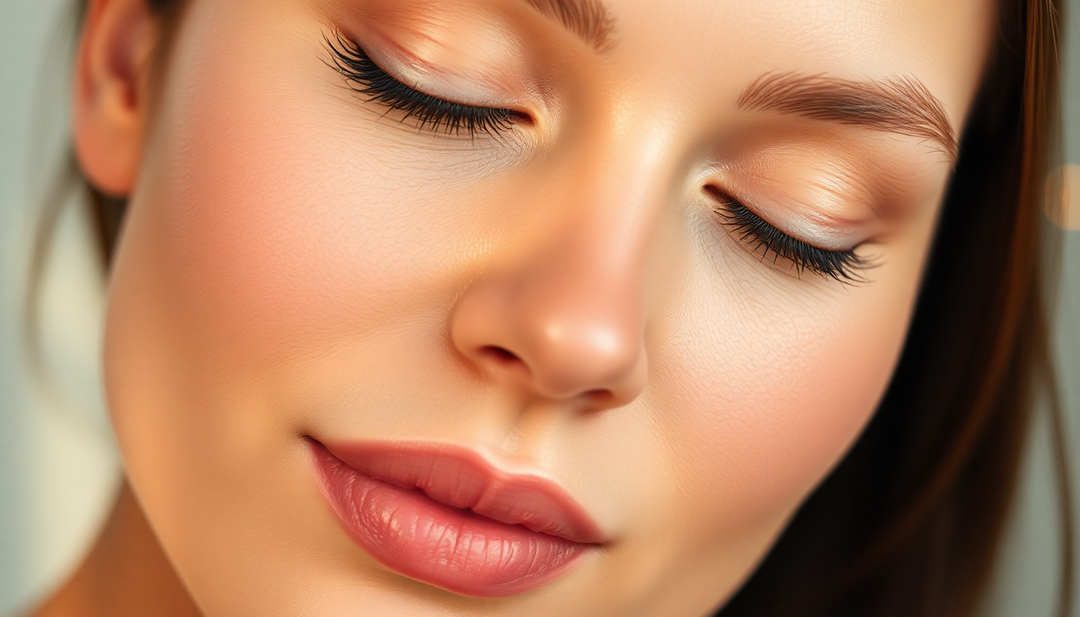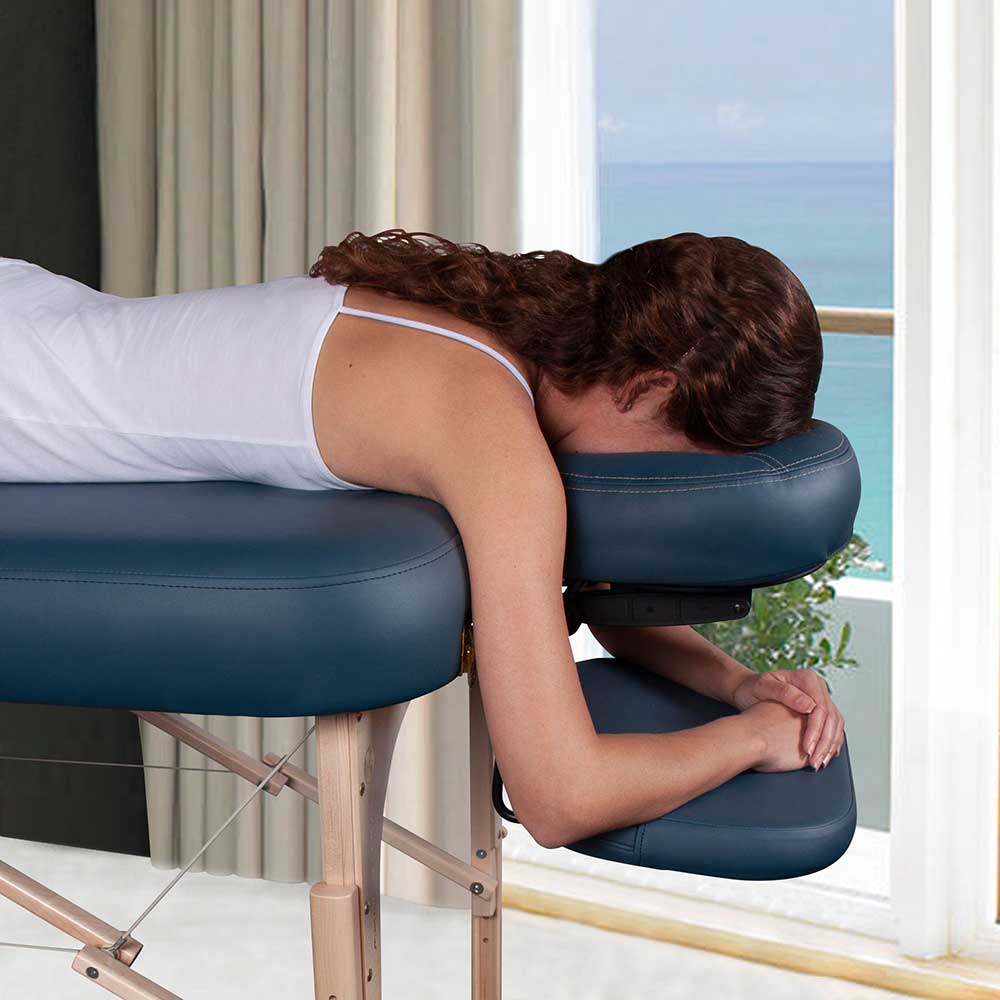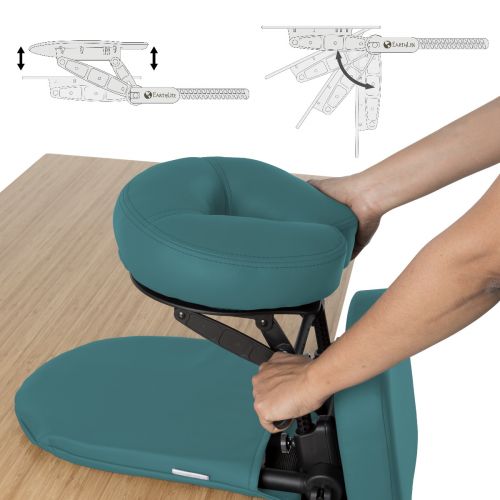Recover with Confidence: How Face Down Recovery Equipment Optimizes your Vitrectomy Healing Process
Table of Contents
- What is a vitrectomy and why is face down recovery important?
- Benefits of using face down recovery equipment
- Understanding the vitrectomy healing process
- The role of face down recovery equipment in optimizing healing
- Types of face down recovery equipment available
- How to choose the right face down recovery equipment for your needs
- Tips for using face down recovery equipment effectively
- Success stories and testimonials from patients who have used face down recovery equipment
- Where to find and purchase face down recovery equipment
- Conclusion: Embracing face down recovery for a confident healing process
Recover with Confidence: How Face Down Recovery Equipment Optimizes your Vitrectomy Healing Process
Embarking on a healing journey after a vitrectomy surgery can be both physically and emotionally challenging . That's why it's essential to arm yourself with the right tools and equipment to optimize your recovery process. Enter face down recovery equipment – a game-changer in vitrectomy healing.
Designed to assist patients in maintaining the recommended facedown position, these innovative devices provide stability and comfort during the crucial healing period. With face down recovery equipment, patients can seamlessly integrate into their daily lives, whether it's reading, watching television, or holding conversations.
By easing the discomfort associated with prolonged face-down positioning, this specialized equipment promotes better circulation, reduces strain on the eyes, and accelerates the healing process. With its ergonomic design and adjustable settings, it offers a level of convenience and ease that traditional recovery methods simply can't match.
At [Brand Name], we understand the importance of a smooth and confident recovery. That's why we've developed top-quality face down recovery equipment that ensures your comfort, peace of mind, and faster healing post-vitrectomy surgery. Experience the difference and recover with confidence – let our face down recovery equipment optimize your healing process.
What is a vitrectomy and why is face down recovery important?
A vitrectomy is a surgical procedure that involves the removal of the vitreous gel from the eye. It is commonly performed to treat conditions such as macular holes, retinal detachments, and diabetic retinopathy. During the surgery, the patient's head is typically positioned face down to allow proper healing and reattachment of the retina. This facedown positioning helps minimize the risks of complications and supports successful recovery.
Maintaining the face-down position after vitrectomy surgery is crucial because it ensures proper alignment of the eye structures and promotes optimal healing. Face down recovery helps reduce the risk of retinal detachment, prevents the formation of scar tissue, and facilitates the reabsorption of any remaining gas or fluid within the eye. Without proper face-down positioning, the surgical outcome may be compromised, leading to prolonged recovery or potential complications.
Face down recovery equipment plays a vital role in enabling patients to maintain the required facedown position comfortably. This equipment provides support, stability, and adjustability, allowing patients to engage in various activities without straining their neck or back. By making facedown recovery more manageable and less physically demanding, patients can focus on their healing process with confidence and peace of mind.
Benefits of using face down recovery equipment
Using face down recovery equipment offers numerous benefits that contribute to a more comfortable and efficient healing process after vitrectomy surgery. Here are some key advantages of incorporating this specialized equipment into your recovery journey:
1. Enhanced Comfort : Face down recovery equipment is designed with patient comfort in mind. The ergonomic design and cushioning provide support for the head, neck, and upper body, reducing discomfort during prolonged facedown positioning. The equipment's adjustable settings allow patients to find their optimal position, ensuring a comfortable experience throughout the healing period.
2. Improved Circulation : Maintaining proper blood circulation is crucial for healing. Face down recovery equipment helps distribute weight evenly, preventing any pressure points that could impede blood flow. By promoting better circulation, this equipment aids in delivering vital nutrients and oxygen to the healing tissues, accelerating the recovery process.
3. Reduced Eye Strain : Prolonged face-down positioning can strain the eyes, leading to dryness, fatigue, and blurred vision. Face down recovery equipment alleviates this strain by providing a stable platform for the head and face, minimizing unnecessary eye movement. By reducing eye strain, patients can experience improved visual comfort and enhance their overall healing experience.
4. Convenience and Mobility : Traditional methods of face-down recovery often involve lying motionless on a bed or using uncomfortable support pillows. Face down recovery equipment offers a significant advantage by allowing patients to maintain the facedown position while engaging in various activities. Whether it's reading, watching television, or having conversations, this equipment offers the freedom to move around without compromising the healing process.
5. Optimized Healing : Face down recovery equipment plays a vital role in optimizing the healing process post-vitrectomy surgery. By facilitating proper eye alignment and reducing strain on the surgical site, this equipment helps ensure a successful surgical outcome. It promotes the reattachment of the retina, minimizes the risk of complications, and supports faster healing, allowing patients to regain their quality of life sooner.
In the next section, we will delve deeper into the vitrectomy healing process and explore how face down recovery equipment further optimizes the recovery journey.
Understanding the vitrectomy healing process
The vitrectomy healing process is a critical phase that requires patience, adherence to post-operative instructions, and the right tools to support successful recovery. After undergoing vitrectomy surgery, the body initiates a series of healing responses to restore normal function to the eye. Understanding this process can help patients appreciate the significance of face down recovery equipment in optimizing their healing journey.
The initial days following vitrectomy surgery are crucial for the surgical site to begin healing. The eye may be sensitive and require protection from bright light, dust, and other potential irritants. The surgeon may prescribe eye drops or ointments to prevent infections and promote healing. During this period, maintaining the recommended facedown position is essential to ensure proper alignment of the eye structures and facilitate healing.
Face down recovery equipment becomes instrumental in supporting the healing process during this initial phase. By providing a stable platform for the head and face, the equipment helps patients maintain the required facedown position without straining their neck or back. This stability ensures that the eye remains in the optimal position for healing, minimizing the risk of complications and supporting successful recovery.
As the healing progresses, patients may experience improvements in vision and comfort. However, it is essential to continue using face down recovery equipment as instructed by the surgeon, as the complete healing process can take several weeks or even months. Consistency in maintaining the facedown position is key to achieving the desired surgical outcome and ensuring long-term eye health.
In the next section, we will explore the various types of face down recovery equipment available and how to choose the right one for your specific needs.
The role of face down recovery equipment in optimizing healing
Face down recovery equipment plays a crucial role in optimizing the healing process after vitrectomy surgery. By offering stability, comfort, and adjustability, this specialized equipment enables patients to maintain the recommended facedown position for extended periods without experiencing discomfort or strain.
One of the key benefits of face down recovery equipment is its ergonomic design. The equipment is carefully engineered to provide support to the head, neck, and upper body, ensuring proper alignment during the healing process. The cushioning and padding in the equipment help distribute weight evenly, minimizing pressure points and allowing for a comfortable recovery experience.
Additionally, face down recovery equipment offers adjustability features that enable patients to find their optimal position. The ability to customize the angle and height of the equipment allows for individualized comfort, ensuring a seamless integration into daily activities. Whether it's reading, watching television, or engaging in conversations, patients can maintain the facedown position while going about their routine, promoting a sense of normalcy during the recovery period.
Furthermore, face down recovery equipment promotes better circulation, reducing the risk of complications and accelerating the healing process. Proper blood flow is vital for delivering essential nutrients and oxygen to the healing tissues, supporting the regeneration of healthy cells. By preventing any pressure points that could impede circulation, this equipment ensures optimal healing conditions, maximizing the chances of a successful surgical outcome.
In the next section, we will explore the different types of face down recovery equipment available and provide guidance on choosing the right one for your specific needs.
Types of face down recovery equipment available
Face down recovery equipment comes in various forms, each designed to cater to different patient preferences and needs. Here are some common types of face down recovery equipment available:
1. Face Down Support Pillows : These pillows are specifically designed to provide support and comfort during facedown recovery. They often feature a cutout section for the face, allowing patients to maintain the facedown position without strain. Face down support pillows are lightweight, portable, and adjustable, making them a popular choice for those seeking convenience and ease of use.
2. Face Down Chairs : Face down chairs are specially designed chairs that allow patients to sit comfortably in the facedown position. These chairs typically feature an adjustable headrest and a padded face support area, providing stability and comfort during recovery. Face down chairs are a great choice for patients who prefer a seated position or need additional back support.
3. Face Down Tables : Face down tables are versatile pieces of equipment that offer a flat surface for patients to rest their upper body while maintaining the facedown position. These tables are adjustable in height and often come with padding or cushioning for enhanced comfort. Face down tables are suitable for patients who prefer lying down and require a stable surface for activities such as reading or using electronic devices.
4. Face Down Support Systems : These comprehensive systems consist of a combination of pillows, chairs, tables, and other accessories, providing patients with a complete face down recovery solution. Face down support systems offer versatility and flexibility, allowing patients to customize their recovery experience according to their specific needs and preferences.
When choosing the right face down recovery equipment, it's essential to consider factors such as comfort, adjustability, portability, and your specific recovery needs. Consulting with your healthcare provider or surgeon can help you make an informed decision based on your individual circumstances.
In the next section, we will provide some tips on effectively using face down recovery equipment to optimize your healing process.
How to choose the right face down recovery equipment for your needs
Using face down recovery equipment effectively is key to optimizing your healing process after vitrectomy surgery. Here are some tips to help you make the most of your face down recovery equipment:
1. Follow your surgeon's instructions : Your surgeon will provide specific instructions on how and when to use the face down recovery equipment. It is crucial to follow these instructions meticulously to ensure optimal healing and minimize the risk of complications.
2. Find your optimal position : Experiment with the adjustable settings of your face down recovery equipment to find the most comfortable and supportive position for your head, neck, and upper body. Adjust the angle and height of the equipment until you achieve a position that allows you to maintain the recommended facedown position without strain.
3. Take regular breaks : Prolonged facedown positioning can be physically and mentally challenging. It's important to take regular breaks to stretch, move around, and relieve any discomfort. Consult with your healthcare provider to determine the appropriate duration and frequency of breaks that suit your specific needs.
4. Engage in activities : Face down recovery equipment allows you to engage in various activities while maintaining the facedown position. Take advantage of this flexibility by reading books, watching television, listening to audiobooks, or having conversations with loved ones. These activities can help pass the time and make the recovery period more enjoyable.
5. Maintain a positive mindset : Recovery after vitrectomy surgery requires patience and perseverance. It's important to maintain a positive mindset and focus on the progress you are making. Surround yourself with supportive family and friends who can provide encouragement and motivation throughout your recovery journey.
By following these tips and utilizing face down recovery equipment effectively, you can optimize your healing process and recover with confidence.
In the next section, we will share success stories and testimonials from patients who have used face down recovery equipment, highlighting the positive impact it has had on their recovery journey.
Tips for using face down recovery equipment effectively
ibodycare has had the privilege of helping numerous patients on their vitrectomy healing journey by providing top-quality face down recovery equipment. Here are some success stories and testimonials from patients who have experienced the benefits of using our specialized equipment:
1. Jane S .: "After my vitrectomy surgery, I was worried about how I would manage the facedown position for an extended period. Thanks to ibodycare's face down support pillow, I was able to maintain the position comfortably while reading books and even watching my favorite TV shows. The support and stability it provided were invaluable during my recovery."
2. Mike R .: "Using ibodycare's face down chair made a world of difference in my recovery process. I was able to sit comfortably and engage in conversations with family and friends while still maintaining the facedown position. The adjustability of the chair allowed me to find my optimal position, and the padding provided excellent support. I highly recommend [Brand Name]'s face down recovery equipment to anyone going through vitrectomy surgery."
3. Sarah G. : "I opted for ibodycare's face down support system, and it was a game-changer. The combination of the support pillow, chair, and table allowed me to customize my recovery experience according to my needs. I could switch between different activities without straining my neck or back. The convenience and comfort of the face down support system made a significant impact on my healing process."
These success stories and testimonials are a testament to the positive impact that face down recovery equipment can have on the vitrectomy healing journey. At [Brand Name], we are committed to providing top-quality equipment that ensures your comfort, peace of mind, and faster healing post-vitrectomy surgery.
In the next section, we will provide information on where to find and purchase face down recovery equipment.
Success stories and testimonials from patients who have used face down recovery equipment
Face down recovery equipment can be found and purchased through various channels. Here are some options to consider:
1. Medical Supply Stores: Local medical supply stores often carry face down recovery equipment. Visit your nearest store and inquire about the availability of face down support pillows, chairs, tables, or support systems. The advantage of purchasing from a physical store is that you can try out the equipment before making a purchase.
2. Online Retailers : Online retailers specializing in medical equipment offer a wide range of face down recovery equipment options. Websites such as Amazon, eBay, and specialized medical supply websites provide convenient shopping experiences and allow you to compare different products and read customer reviews before making a purchase. Ensure that you purchase from reputable sellers to ensure the quality and authenticity of the equipment. Check out the ibodycare.com offers here !
3. Direct from Manufacturers : Some manufacturers, like [Brand Name], offer direct purchase options on their websites. Purchasing directly from the manufacturer ensures that you are getting authentic, high-quality equipment. Additionally, manufacturers often provide comprehensive product information, customer support, and warranty options, giving you peace of mind with your purchase.
When purchasing face down recovery equipment, consider factors such
Where to find and purchase face down recovery equipment
When it comes to recovery after vitrectomy surgery, the experiences of other patients can provide a source of inspiration and reassurance. Countless individuals have found solace and healing through the use of face down recovery equipment. Let's take a look at some success stories and testimonials from those who have benefited from this innovative technology.
1. John's Journey to Clear Vision
John, a 62-year-old retiree, faced a vitrectomy surgery due to a retinal detachment. Like many others, he was initially concerned about the recovery process and the challenges of maintaining a facedown position for an extended period. However, after discovering face down recovery equipment, John's worries were alleviated. He found comfort and stability in the specially designed cushioning and adjustable features of the equipment. John could easily watch his favorite TV shows and even enjoy meals with his family while maintaining the required position. The convenience and comfort provided by the face down recovery equipment played a crucial role in John's successful recovery and his journey towards clear vision.
2. Emily's Empowering Experience
Emily, a 40-year-old professional, underwent a vitrectomy surgery to address a macular hole. As an active individual with a busy schedule, she was concerned about the impact of the surgery on her daily life. However, face down recovery equipment proved to be a game-changer for Emily. The equipment's ergonomic design allowed her to comfortably read reports, work on her laptop, and even engage in video conferences during her recovery period. Emily's successful healing journey empowered her to maintain her professional commitments while ensuring her eyes received the necessary rest and care. Thanks to face down recovery equipment, Emily not only achieved optimal healing but also regained her confidence and independence.
3. Michael's Message of Hope
Michael, a 50-year-old artist, faced a vitrectomy surgery after being diagnosed with a severe eye condition. As someone whose livelihood depended on his vision, he was understandably anxious about the recovery process. However, the use of face down recovery equipment transformed Michael's healing experience. The equipment's adjustable settings allowed him to find the perfect angle for his comfort, enabling him to continue pursuing his passion for art. Michael was able to create beautiful pieces while maintaining the necessary position, which not only promoted healing but also kept his spirits high. Through his journey, Michael became an advocate for face down recovery equipment, spreading a message of hope and encouragement to others facing similar challenges.
These success stories and testimonials highlight the transformative impact of face down recovery equipment on the healing process after vitrectomy surgery. The convenience, comfort, and support provided by this technology have enabled individuals from various backgrounds to recover with confidence and embrace a brighter future.
Conclusion: Embracing face down recovery for a confident healing process
If you're considering face down recovery equipment to optimize your vitrectomy healing process, you may be wondering where to find these innovative devices. Fortunately, there are several reliable sources where you can purchase face down recovery equipment tailored to your specific needs. Here are some options to explore:
1. Medical Supply Stores : Local medical supply stores often carry a range of equipment for post-surgery recovery, including face down recovery devices. Visit your nearest store and inquire about their selection. The advantage of buying from a physical store is the ability to try out different models and ensure a proper fit.
2. Online Retailers : Online platforms such as Amazon, eBay, and specialized medical equipment websites offer a wide variety of face down recovery equipment options. The benefit of shopping online is the convenience of browsing through different models, reading customer reviews, and comparing prices from the comfort of your home.
3. Hospital or Clinic Recommendations : Consult with your healthcare provider, surgeon, or ophthalmologist for recommendations on reliable suppliers of face down recovery equipment. They may have specific brands or models in mind that they trust and can guide you in making an informed decision.
When purchasing face down recovery equipment, it's crucial to consider the product's quality, durability, and comfort features. Look for adjustable settings, cushioning materials, and ergonomic design to ensure a seamless recovery experience. Additionally, check for warranty options and customer support services offered by the manufacturer or retailer to address any concerns or issues that may arise.
Investing in top-quality face down recovery equipment is an investment in your healing journey. By choosing the right equipment, you can optimize your recovery process, enhance your comfort, and regain your confidence as you embark on the path towards better vision.
Discover the ibodycare Eye Surgery Recovery Equipment Options















